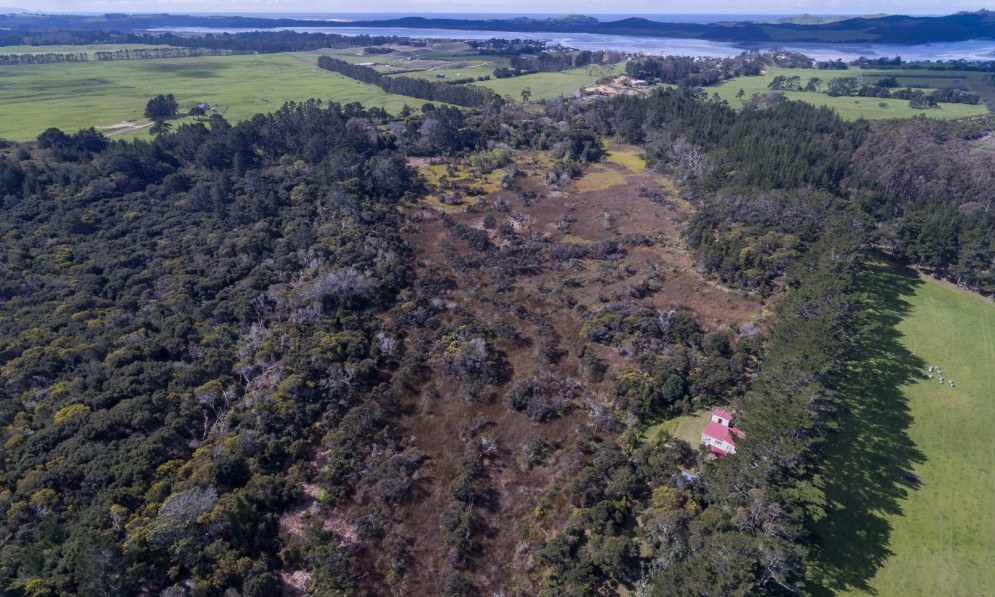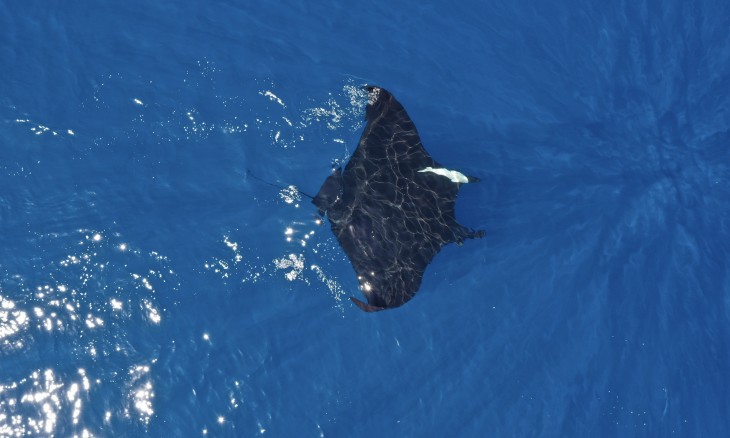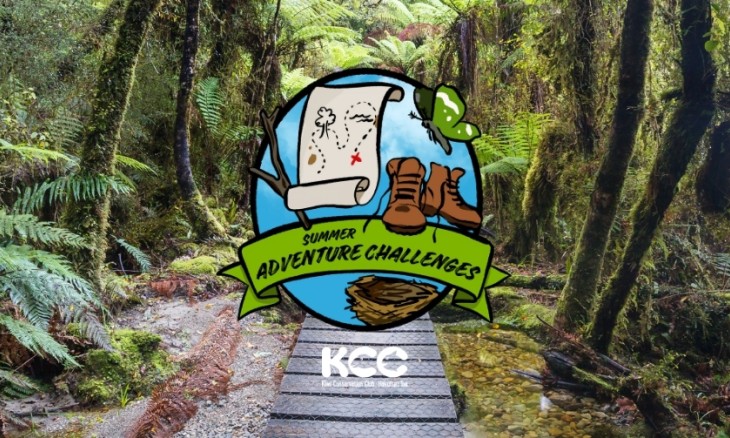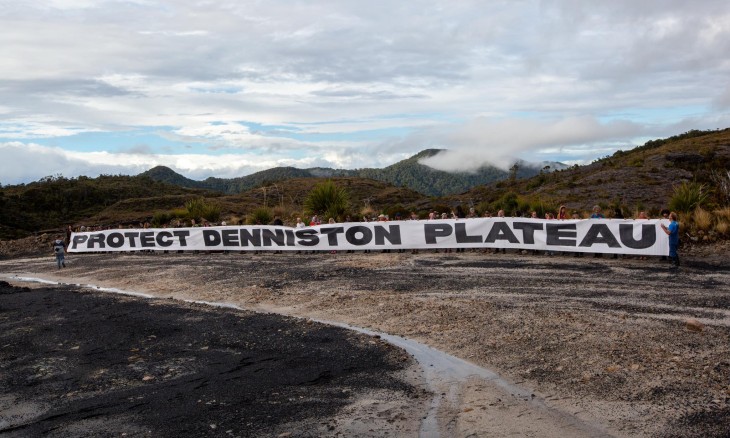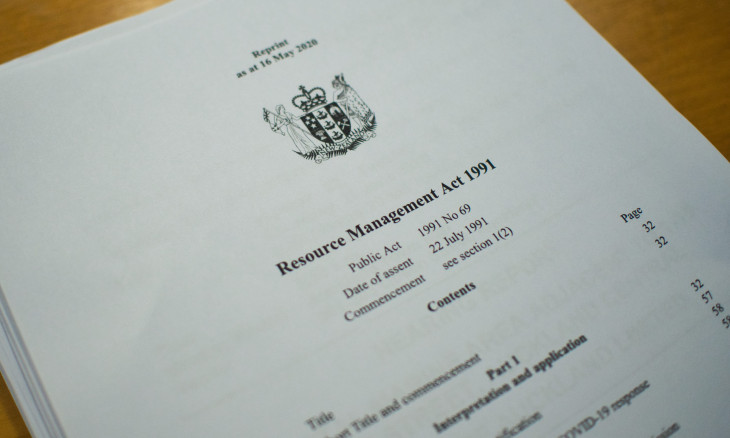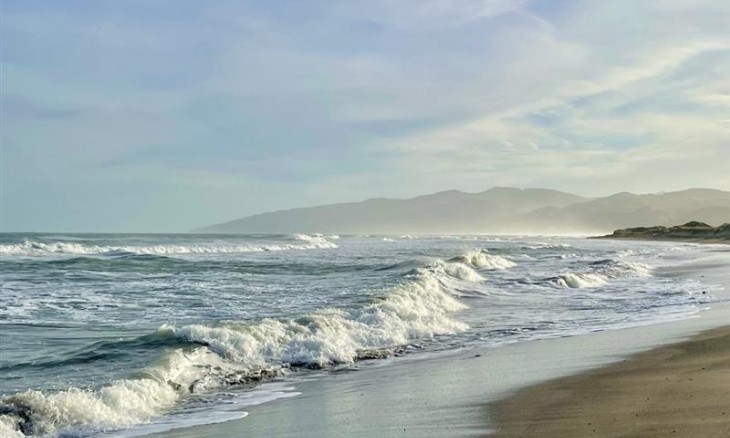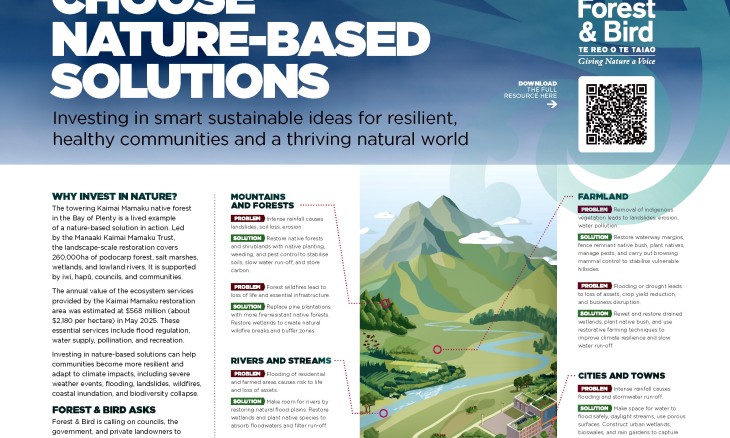Arethusa Reserve is an example of a rare dune lake ecosystem. The dry and sandy perimeter of this area has formed the sides of a shallow basin that collects rain to create a shallow lake and wetlands.
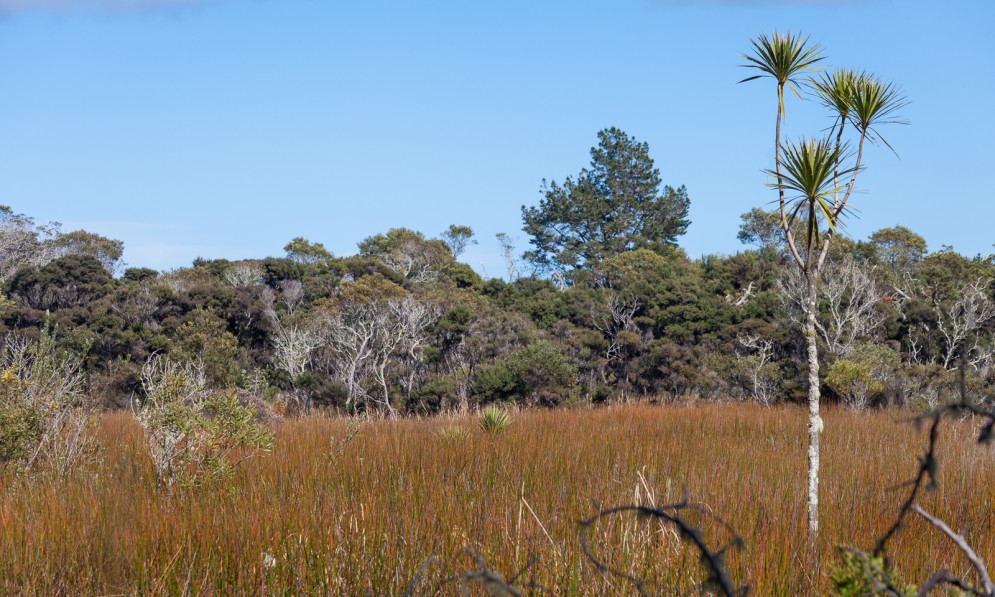
The wetland is home to a range of native plants.
Location and Access
Situated at Lamb Road, Pukenui, at the middle of the Aupouri Peninsula, Northland. A wide track round the wetland perimeter enables visitors to traverse the changing patterns of wetland vegetation in the dune lake system, the vista broken here and there by the bordering manuka and kanuka trees.
History
Mrs Dagny Oxford bequeathed Arethusa to the Society in 1985. The original Oxford house was sold in 1999 when part of the property containing the house was subdivided off.
Vegetation
The wetland is home to a range of native plants, including:
- Isolepis prolifer
- Tail spikerush (Eleocharis sphacelata)
- Jointed rush (Baumea articulata)
- Raupō
- Harakeke (flax)
- Papyrus
- Bracken
In areas of open water there are water lilies and, at times floating on the surface like a red carpet, a water fern (Azolla filiculoides).
Along its south-western margins, another water fern (Histiopteris incisa) and tangle fern (Gleichenia microphylla) are found in great profusion.
The land surrounding the wetland has a wide range of exotic plants and plant pests, some planted by the branch, some by the previous owner. The main canopy vegetation is wattle species and kānuka, with pine trees along one boundary. There are very few naturally occurring native species on the property, most having been planted by the Far North Branch.
Over the years since Forest & Bird acquired the land, many pōhutukawa, kauri, kahikatea and other native trees have been planted. The once dominant tree species, Sydney golden wattle (Acacia longifolia) is giving way to naturally occurring kānuka, mānuka, karo and various other native species. Along the western slopes, the parasitic native climber taihoa (Cassytha paniculata) climbs over bracken, native shrubs and the sedges Carex albostriatus and Lepidosperma laterale.
Wildlife
The wetland is home to mallard, grey duck, black swan, pied cormorant, pukeko, paradise shelduck and the regionally significant spotless crake. Below the surface there are native eels and the introduced mosquito fish. Sacred kingfisher nest around the wetland margins and flitting amongst the many exotic and native trees are North Island fantail, grey warbler and silvereye.
Reserve Data
| Legal description | Section 27 situated in Block X of Hourora East Survey District, CT 142/42 (North Auckland Land Registration District). |
|---|---|
| Size | 14.4472 hectares. |
| Grid reference | NZMS 260 series N03 206 084. |
| Distance from coastline | 2 kilometres from the east coast Houhora Harbour), 6 kilometres from the west coast (Ninety Mile Beach). |
| Height above sea level | 30 metres |
| Ecological district | Aupouri Ecological District |
| Protective Status | Not formally protected. Land associated with Arethusa Lodge. |
| Naming | Arethusa is named after the nymph of the same name from Greek mythology. |

